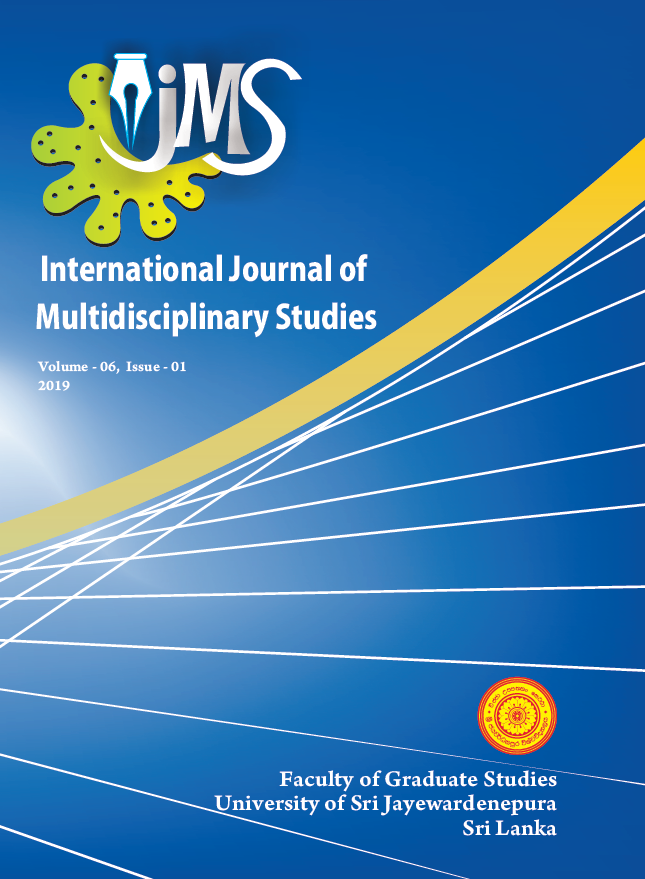Study on Home Range Size and Pattern among Three Diurnal Non-Human Primates in Mihintale Wildlife Sanctuary in Sri Lanka
DOI:
https://doi.org/10.31357/ijms.v6i1.3996Abstract
The size and pattern of a primate home range depends basically on the availability of distribution of food, the density of the group, free-ranging species and geographical factors. When considering about Sri Lankan primates; Sri Lanka is home to five primate species. Three species belongs to catarrhines, the toque monkey (Macaca sinica), the purple-faced langur (S. vetulus), the grey langur (S. priam thersites) and two or more species of the slender loris (Loris spp.). This study was conducted in Mihinthale wildlife sanctuary and focused on the home range of the toque monkey (Macaca sinica sinica), the purple-faced leaf langur (S. vetulus philbrick), and the grey langur (S. priam thersites). Preliminary observations were started from January 2015 to May of 2015. Intensive data collection was started from May 2015 to September, 2016. Behavioural observations were conducted for 136 days. Three groups were selected randomly to represent all three species for this long term study. Home range data was collected by observations of daily path range of the three species. To determine the actual home range of the three species GPS points and hard copies of maps of the site were used. GIS maps were created to illustrate the area used by each species. The results of the home range sizes of each species indicated that the purple-faced –leaf langur’s home range is the largest among the three species. All macaque groups have a minimum home range when compare with the other two langur species. Macaques mainly depend on human-supplied food and hardly depend on the food from the forest, hence recording the smallest home range among the three primate species. The study concludes that purple - faced leaf langur’s home range is the largest home range than gray langur and toque macaque. Gray langur’s home range is larger than toque macaques and smaller than purple-faced leaf langur. Toque macaque has the smallest home range. The identified two main factors for this difference are the availability of food and the density of groups in the given area.
KEYWORDS: food availability, group size, Diurnal, Primate, Home Range

